Liverpool-Douglas-Drummore-Kirkcudbright-Whitehaven-Fleetwood-Liverpool
With the weather warm from the previous week, I thought it would be a good time to go on a cruise. On Friday 20th June, I was Race Officer for the Isle of Man race. I anchored Lillebolero as an outer limit start mark on Pluckington bank and started the 10-boat fleet at 1925. There was not a lot of wind; so, at 1936, I weighed anchor and motored after the fleet. A couple of hours later after passing most of the fleet, I had left the main channel and set my course for Douglas motoring at just over six knots on a relatively calm Irish Sea.
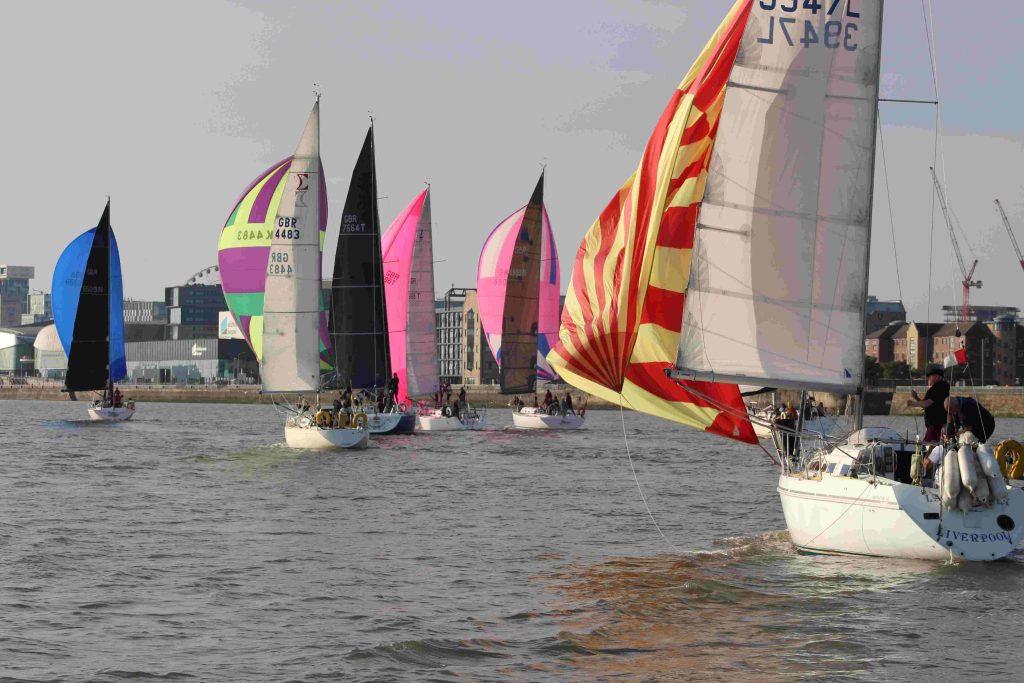
After an incident free passage, I passed Douglas breakwater at 0652 and was all fast in the marina at 0708 and by 0730 I was asleep. Fortunately, I had slept the previous afternoon which meant I was not falling asleep at the wheel. During the day, the rest of the fleet arrived with stories of fickle winds.
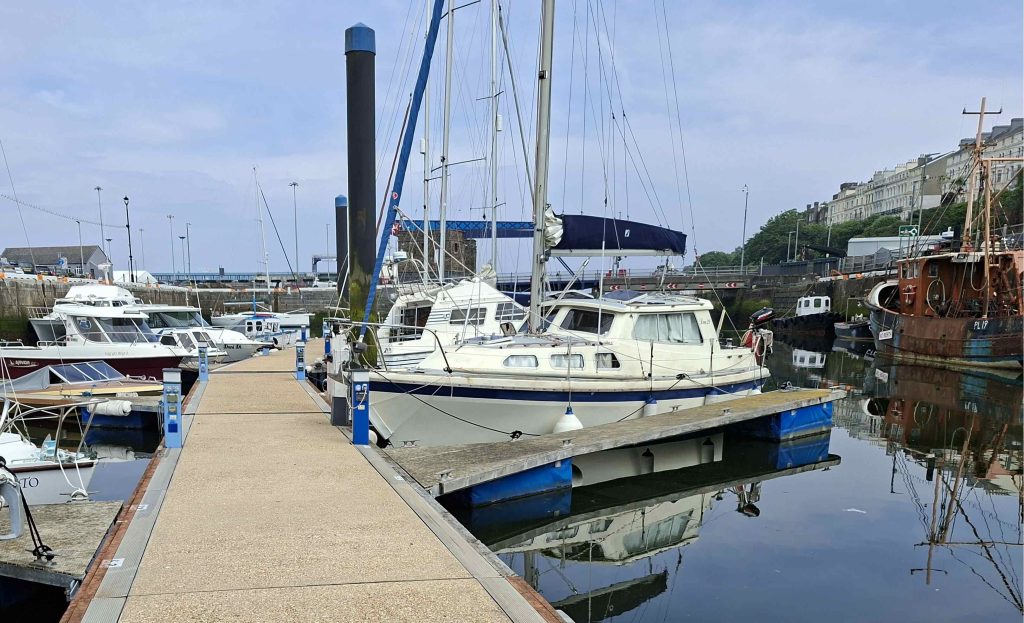
When I departed my berth at 0915, on Sunday 22nd, the weather had changed with grey skies and a building south-westerly wind. I headed north with a double reefed main, a couple of rolls in the genoa and the wind astern. By noon, Maughold lighthouse was on the beam, the wind was force 5 and it was raining.
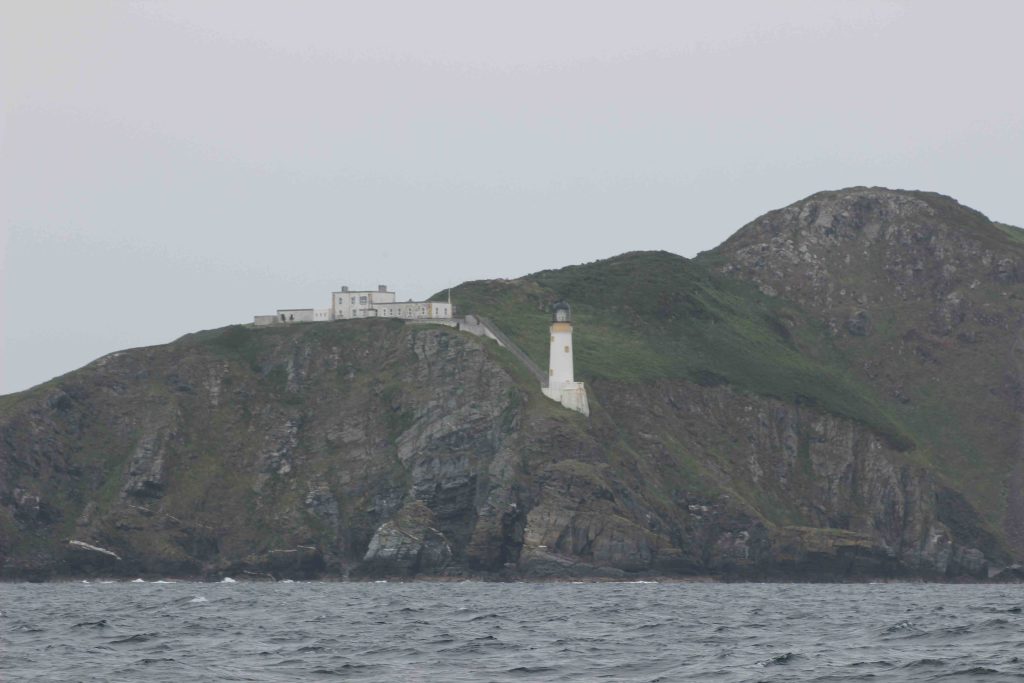
At 1317 hours, I rounded Point of Ayre (top of Isle of Man) and set course for Drummore on the Mull of Galloway. The wind was now force 6 from the west and against the tide. The sea became lumpy but Lillebolero was content bashing along under sail at over six knots.
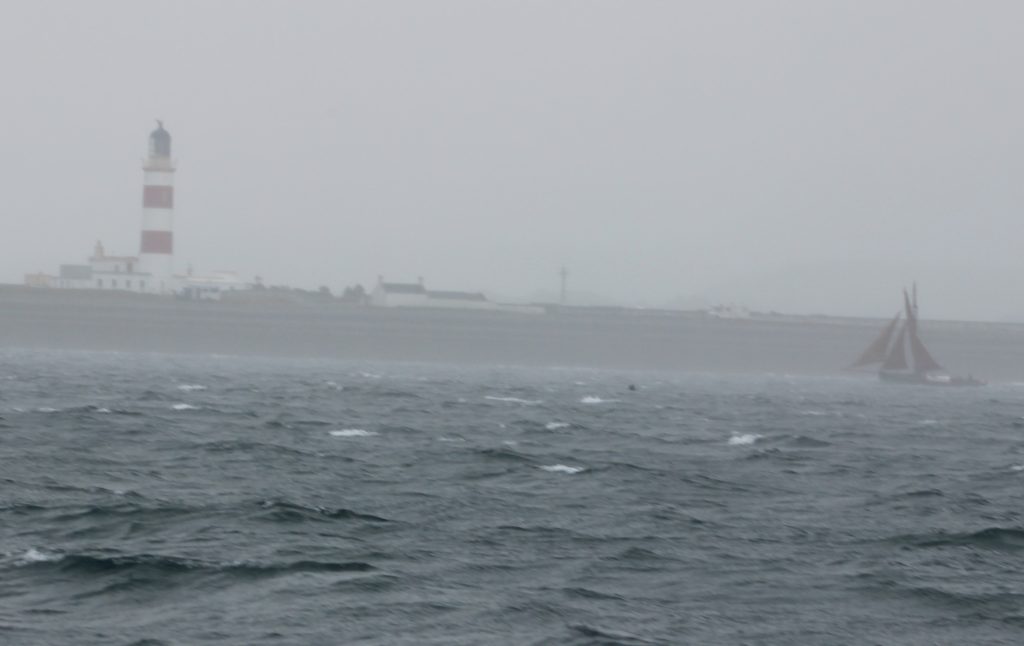
Approaching the Mull of Galloway, the rain stopped and the wind dropped to a pleasant force 3. At 1720, I started the engine but there was no cooling water! Engine stopped. I then applied my engineering knowledge which resulted in no cooling water. So, I navigated into Luce Bay and anchored to the north of Drummore under sail. After an hour of opening up and putting back various parts of the raw water-cooling system, it resumed working and I thought I was an engineer!
I motored into the ever-quiet Drummore as no one goes there. Mainly because Reeds nautical almanac provides the following incorrect description: “…the small drying harbour has now silted almost entirely rendering it of little interest to passing mariners.” The harbour entrance is now dredged annually. After rafting to a local boat, one of the villagers came and took my mooring fee of £15 which is less than half what all the harbours I called at charged.
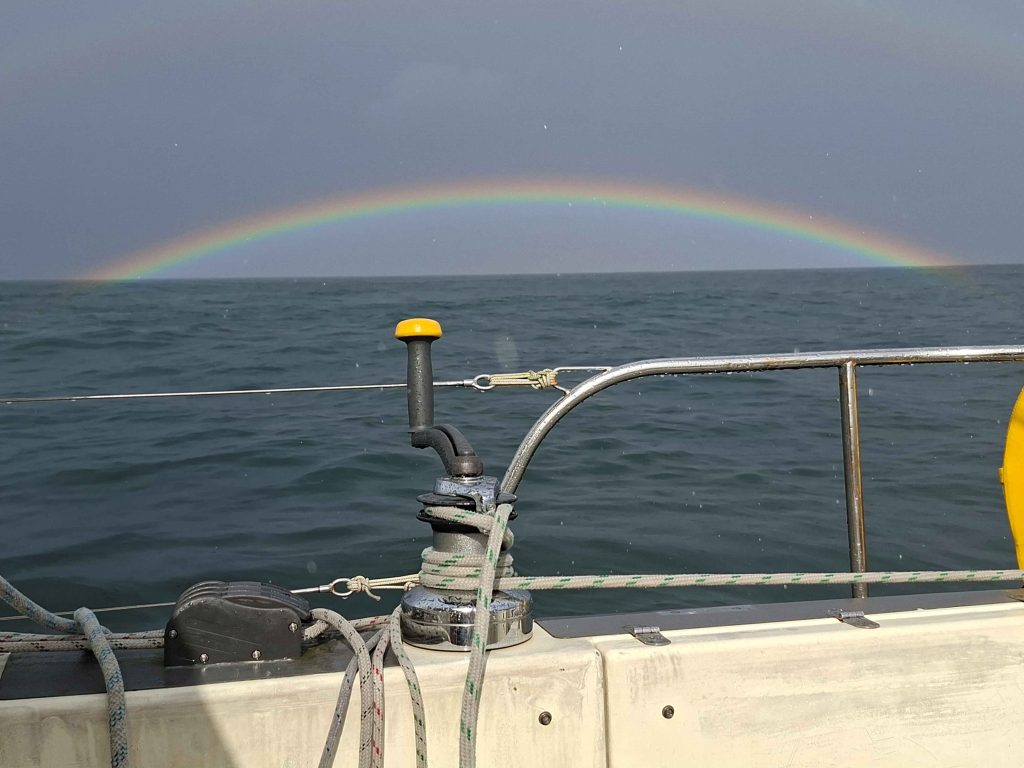
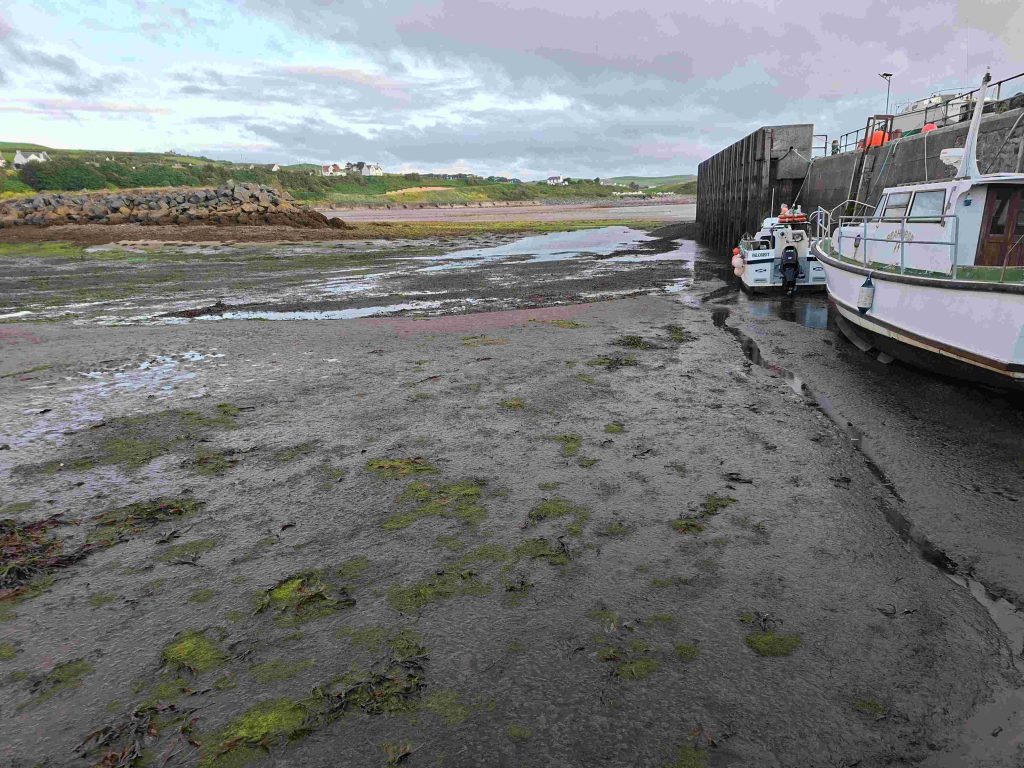
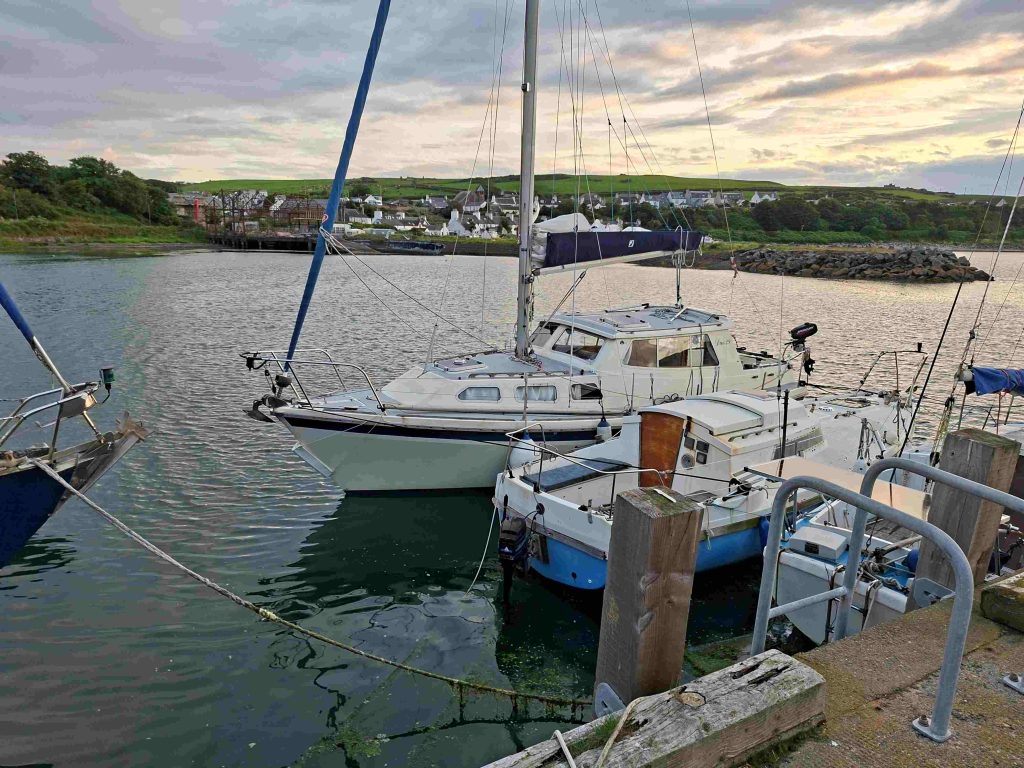
The following Monday morning, while I waited for the tide, I went to the Mariner’s Coffee Shop for a ‘full Scottish breakfast’ which kept me going for the rest of the day. At 1044, I departed Drummore and headed east. The wind was force 4/5 from the west which meant a run under genoa alone. Luce Bay is wide (16 miles from headland to headland) with a set of rocks in the middle of the entrance called ‘The Scares’ amusingly the largest rock is called ‘Big Scare’ which as it is unlit is understandable.
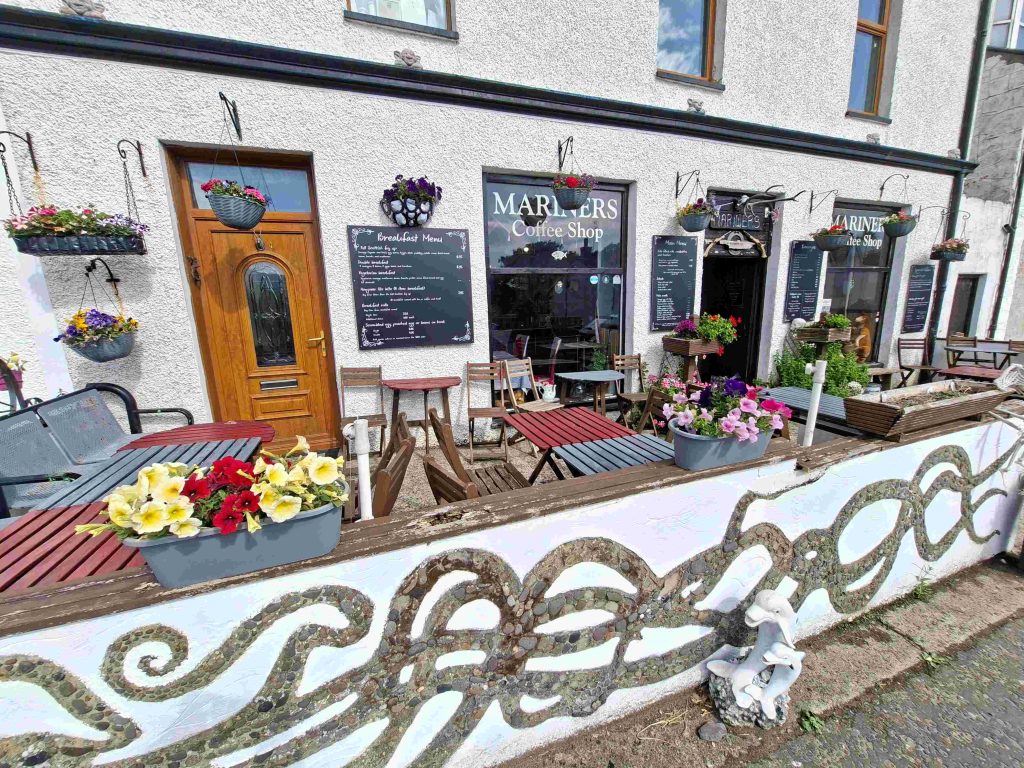
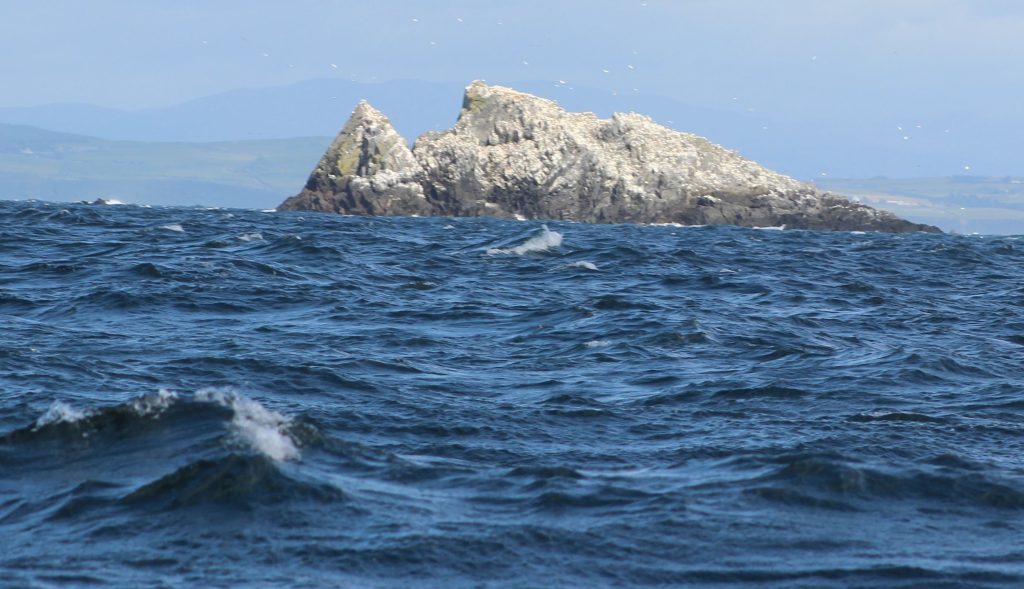
At 1600 Burrow Head was on the port beam followed shortly by Isle of Whithorn harbour. I continued east across Wigtown Bay. At 1745, while nearing Kirkcudbright Bay with the wind now force 5/6, I started the engine: no cooling water! So much for me being an engineer. I quickly headed into the wind and got the main up and then sailed into Kirkcudbright Bay before anchoring in Balmangan Bay north of Bar Point. I spent the evening working on my raw water-cooling system with little joy. With the wind forecast to get up to force 7 and no engine, I put 40 metres of chain out and went to bed.
Next morning, out of curiosity, I started the engine and cooling water came out first time! Seizing the moment, I motored up river to Kirkcudbright town and secured to a visitor’s berth with the harbour master catching my lines. That evening, I had a lovely meal at the Auld Alliance Restaurant that included Kirkcudbright scallops.
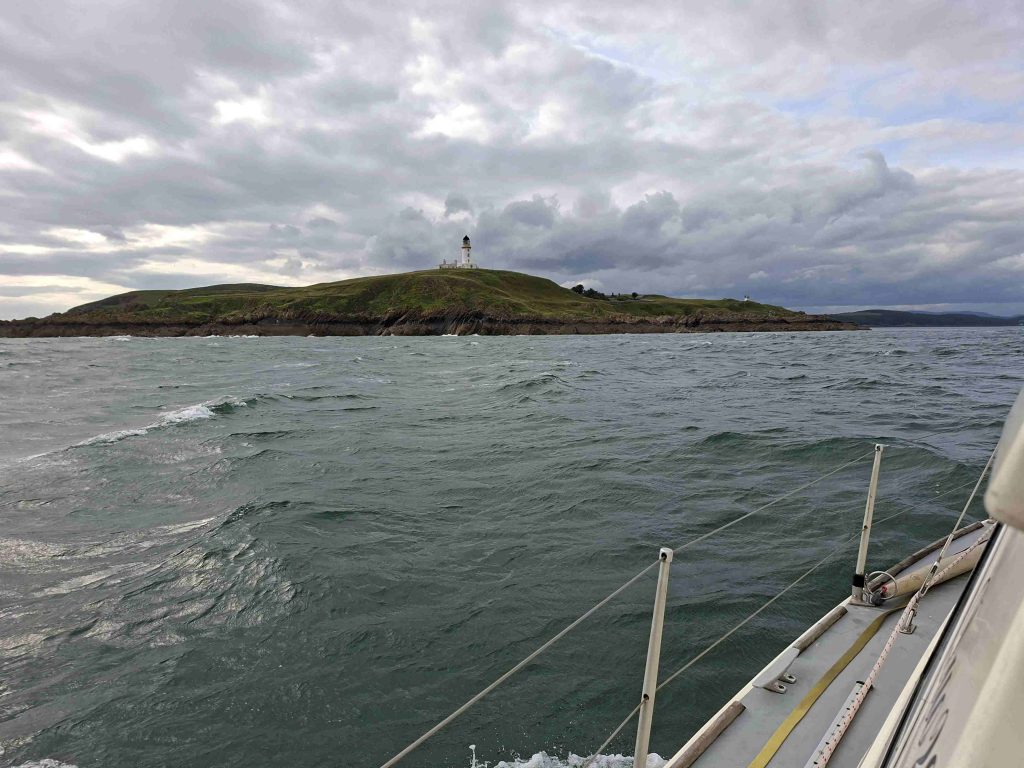
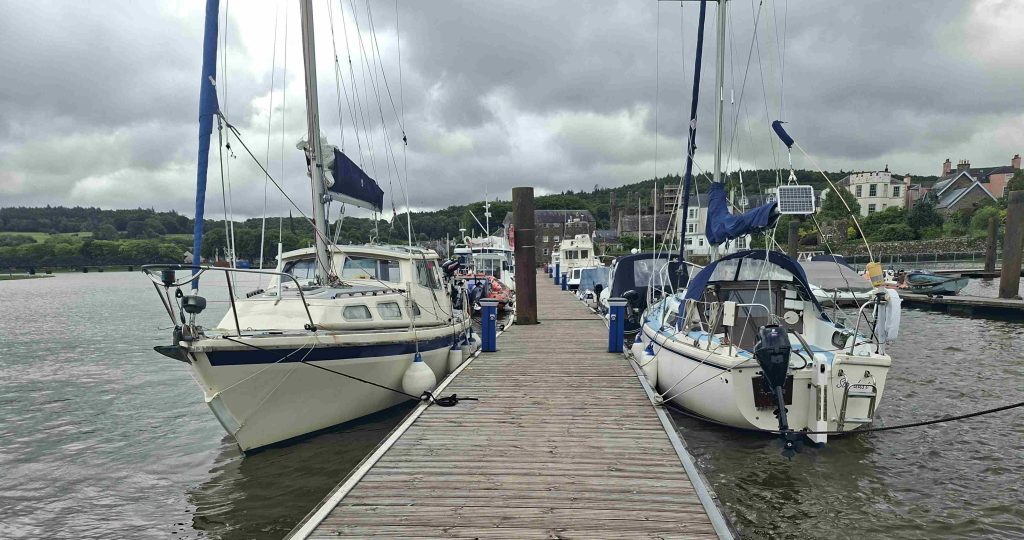
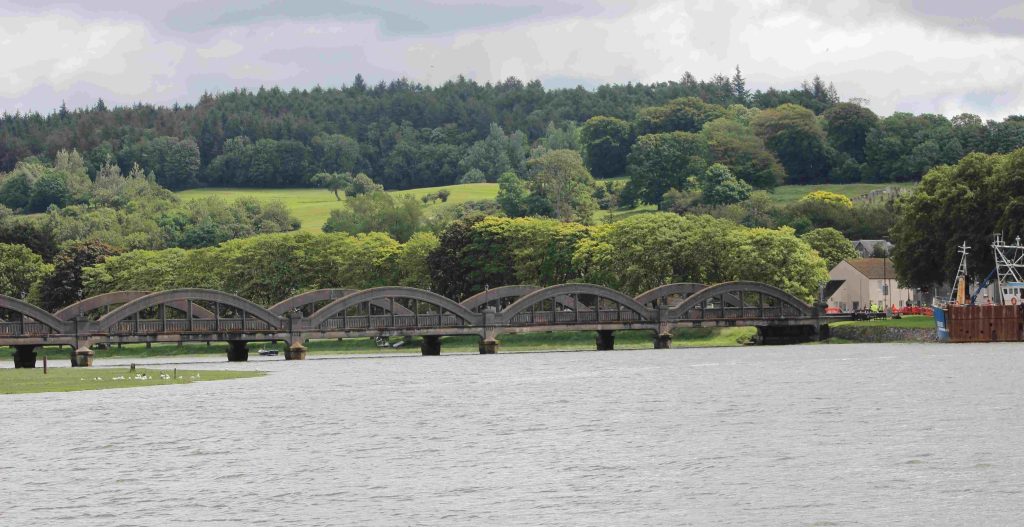
On Wednesday, I bid farewell to Scotland and headed down the River Dee and met with the MOD Range Patrol vessel, Gallovidian, which led me out to sea along the edge of the range for three and a half miles as there was live firing. At 1216, Gallovidian departed and I set a course for Whitehaven. As the wind was light and I wanted to beat the outgoing tide, I motored.
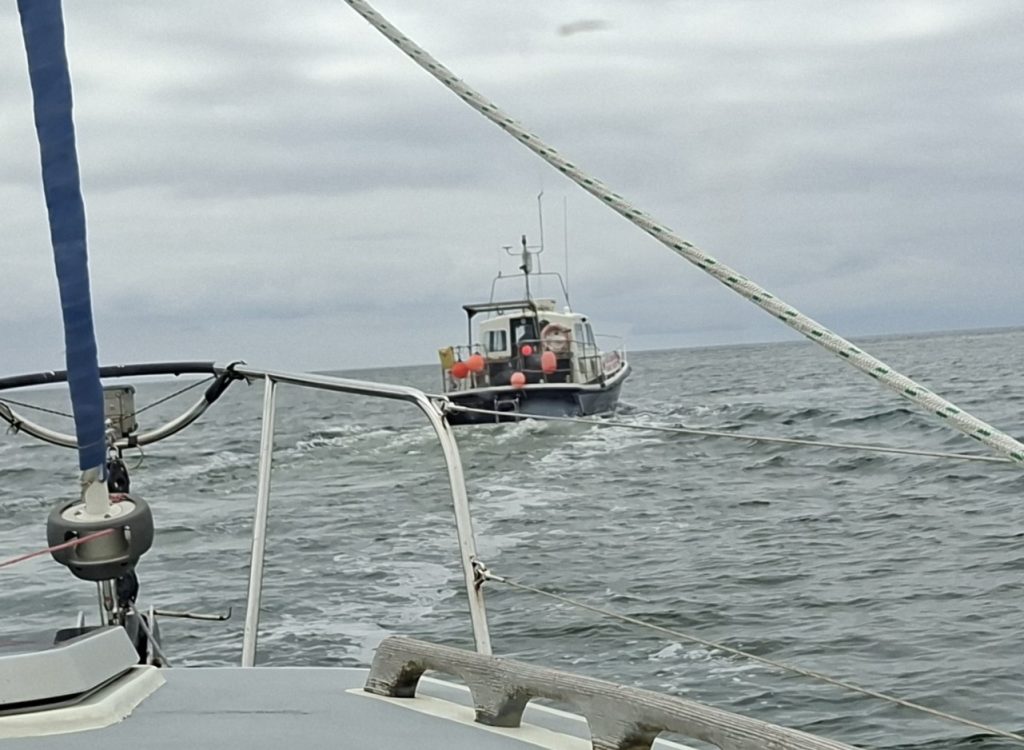
At 1557, I locked into Whitehaven with not a lot under the keel. The lockkeepers advise that the drying depth in the outer harbour is chart datum plus two metres. As usual the lockkeeper was helpful lowering a bag containing a map of the marina with my berth highlighted; plus, the gate, toilet block and wifi codes. My evening meal was a good fish and chips from Frasers.
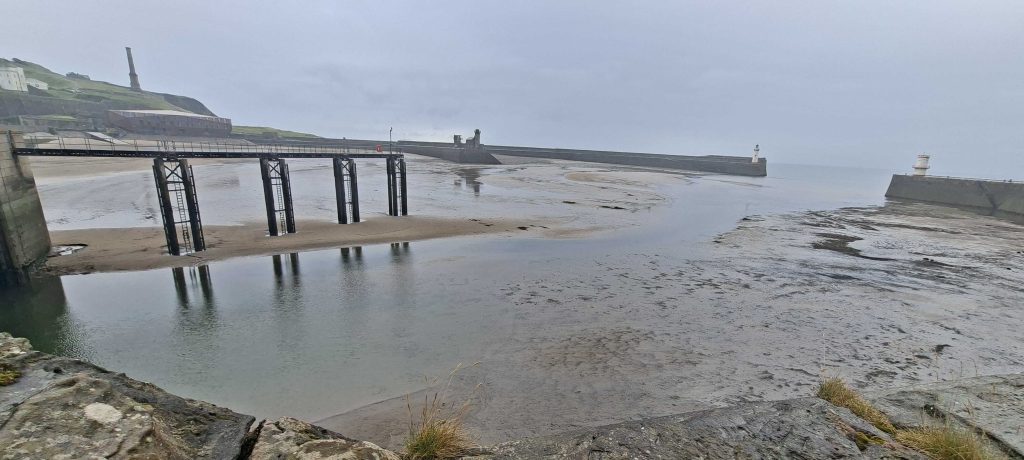
The forecast for the rest of the week was not great. Thursday and Sunday looked the best days. At 1335, I departed Whitehaven with a forecast of west to southwest force 4 to 6 occasionally 7 later. The waves were waiting as I cleared the outer harbour but eased off once in deeper water. I again chose to motor. At 1420 I was passing Saint Bees head. At 1600, Sellafield was on the beam. At 2330 I entered Luna Deep with the boat pitching and rolling in the waves from the west. Morecambe Bay wave buoy was recording maxim wave heights of 2.5 metres at this time.
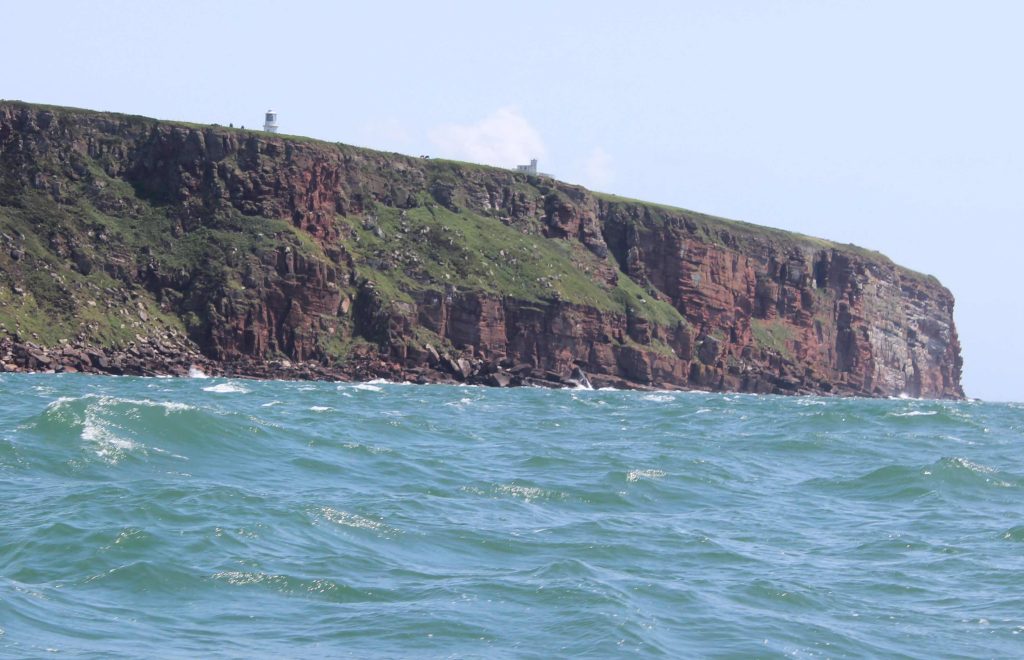
At 0045 on Friday morning, I entered the Fleetwood channel with waves breaking over the deck which meant I had to focus on my navigation until I had entered the River Wyre. It was then a quick dash around the deck to rig fenders and mooring lines before entering Fleetwood Marina. Fortunately, Fleetwood uses free-flow over the high tide; so, no need to stop at the lock. Helpfully, there was a member of staff to meet me at the berth and take my lines which was great at 0120 in the morning.
I then had two days in Fleetwood waiting for the weather to abate. On the Saturday afternoon tide, a 44-foot sailing yacht grounded just outside the Fleetwood Channel, took in water and capsized. Fortunately, the lifeboat was attending and rescued the two crew. I didn’t know this until I departed at 0244 on Sunday morning when the lockkeeper advised me to watch out for a capsized yacht at the end of the channel. I didn’t see it.
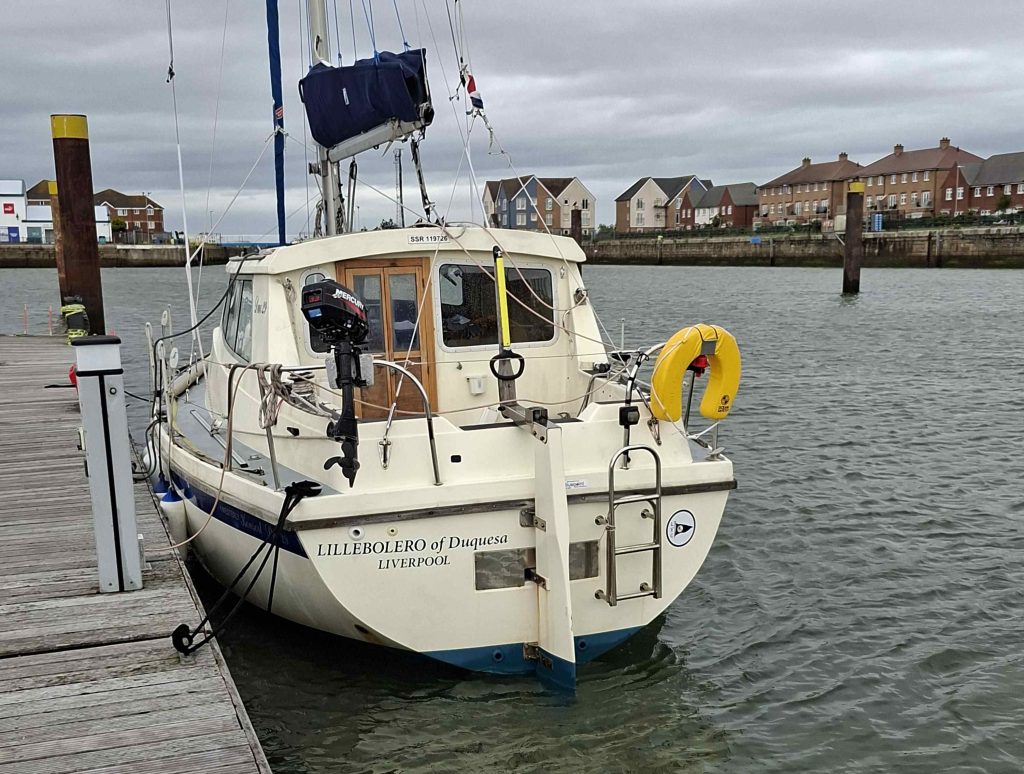
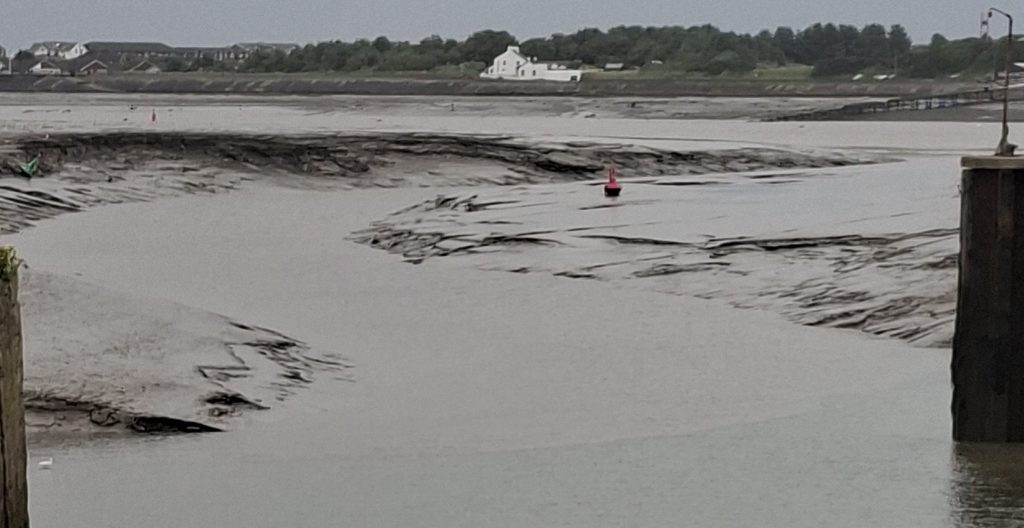
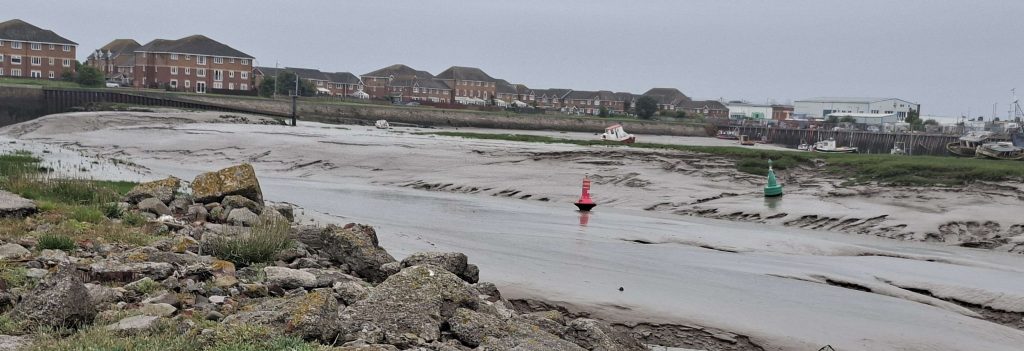
By now the wind had gone and I motored out of Morecambe Bay in light airs before turning south. At 0600 I was abeam of Blackpool Tower. I was going slowly so as to be not too early for the Liverpool marina lock. At 1019, I passed Q2 buoy and plodded up the Queens and Crosby channels before passing Brazil buoy at 1210.
At 1311, I locked in, meeting the outgoing LYC fleet in readiness for their race, and that was the end of my cruise.
Alistair Roaf
